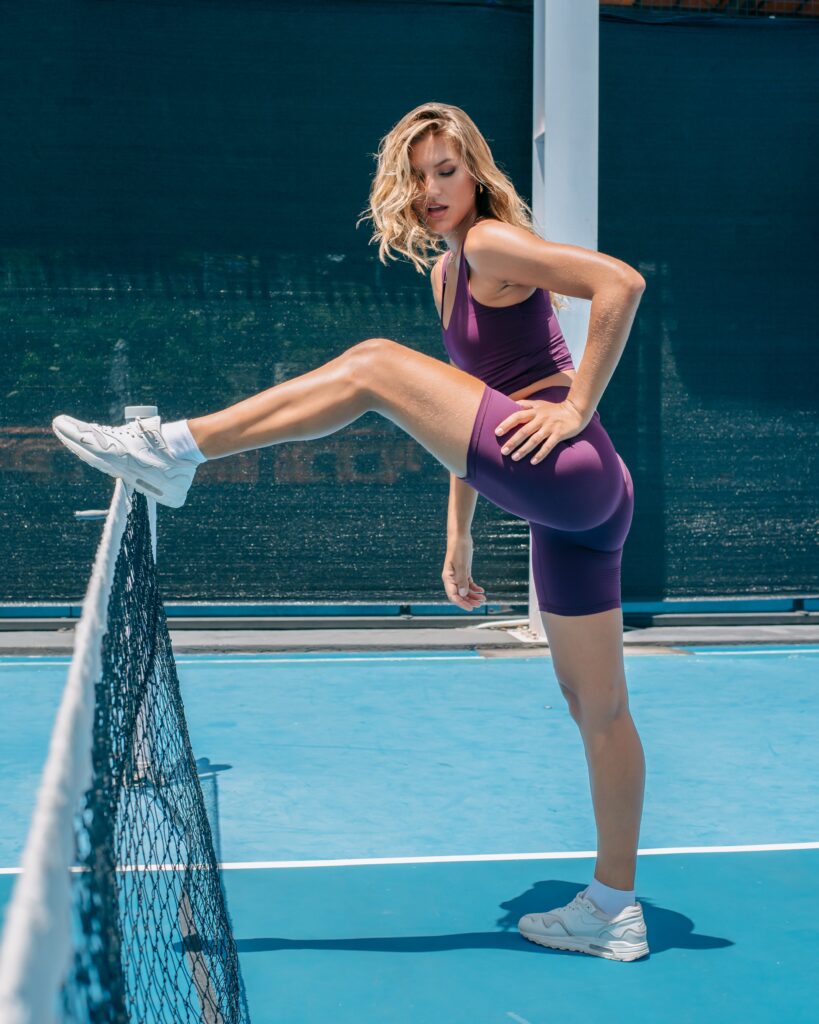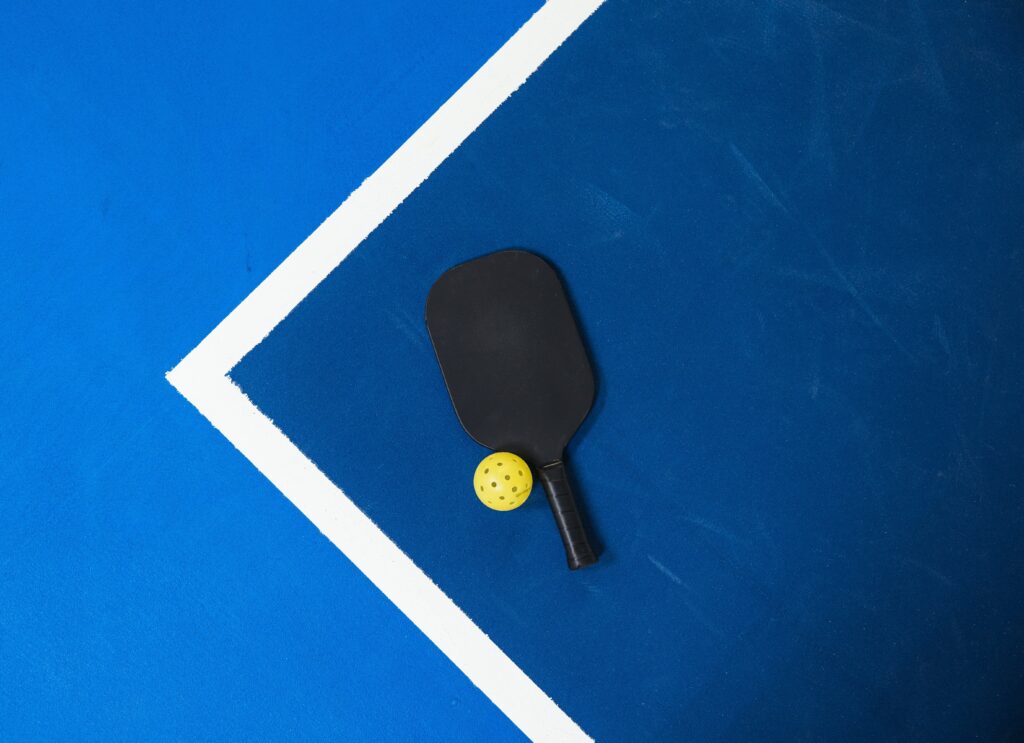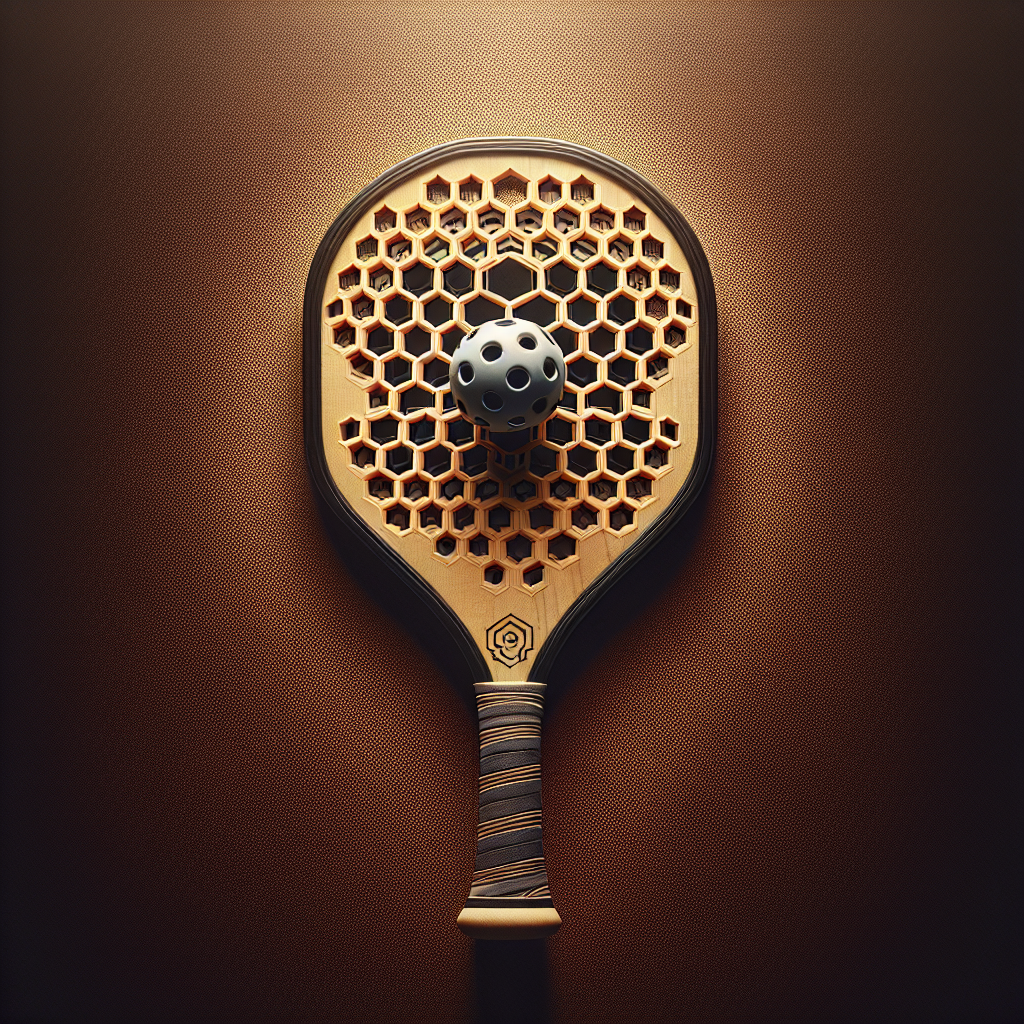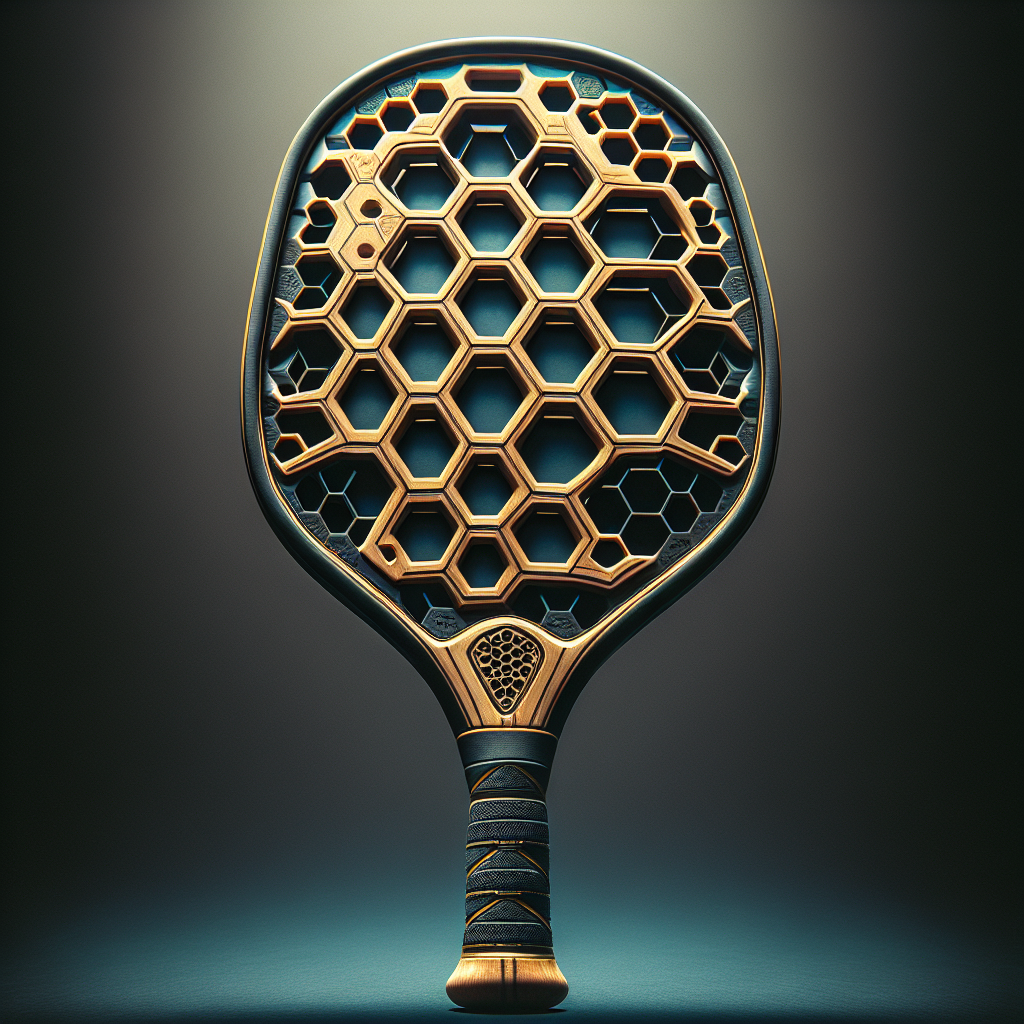So you’ve heard the buzz about pickleball and you’re curious to learn more? Look no further! This article presents a concise and beginner-friendly overview of the essential rules of pickleball. Whether you’re new to the sport or just need a refresher, we’ve got you covered. Read on to discover the key guidelines that will have you serving, volleying, and scoring points in no time. Let’s jump right in!

Court and Equipment
Court Dimensions
Pickleball is typically played on a court that measures 20 feet wide by 44 feet long, which is the same size as a doubles badminton court. The court is divided into two equal halves by a centerline and the professional games will often have an additional 7-foot non-volley zone in front of the net.
Court Surface
The most common type of surface for pickleball courts is a hard court made of asphalt or concrete, but the game can also be played on indoor surfaces such as wood or rubber. The surface should be level and free of any cracks or other hazards to ensure safe gameplay.
Net Height
The net used in pickleball is 36 inches high at the sideline and 34 inches high in the center. This lower height allows for more dynamic gameplay and exciting rallies, while still maintaining a fair challenge for players of all skill levels.
Paddle
The paddle is an essential piece of equipment in pickleball. It is similar to a table tennis paddle but larger, with a solid face made of wood, composite materials, or a combination of both. Paddles can vary in weight, grip size, and surface texture, so it’s important to find one that feels comfortable and suits your playing style.
Ball
Pickleball is played with a perforated plastic ball, similar to a wiffle ball. The ball has a slightly larger diameter than a standard tennis ball but is much lighter. The color of the ball can vary, but it is typically either yellow or white. The ball’s unique design allows for better control and slower gameplay, making it suitable for players of all ages and abilities.
Serve Rules
Service Order
In pickleball, the serving team is determined by a coin toss or other means of random selection. The first team to serve starts on the right side of the court. The serving order then alternates between the two teams throughout the game.
Serving Area
The server must stand behind the baseline and serve the ball diagonally to the opponent’s service court. The serve must clear the non-volley zone, also known as the kitchen, which is a 7-foot area adjacent to the net. Failure to clear the kitchen results in a fault.
Service Motion
The serving motion in pickleball is similar to that of tennis. The server must keep both feet behind the baseline until the ball is struck. The ball must be hit with an underhand swing, and the paddle must make contact with the ball below the waist.
Faults
There are several faults that can occur during a serve in pickleball. These include stepping on or into the kitchen during the serve, failing to hit the ball into the opponent’s service court, hitting the ball out of bounds, or not making contact with the ball below the waist. In each case, a fault results in the loss of the serve and a point for the opposing team.
Scoring
Points
Points in pickleball are scored only by the serving team. A team earns a point whenever the opposing team faults, hits the ball out of bounds, or fails to return a legal shot. The first team to reach 11 points, with a lead of at least two points, wins the game.
Winning the Game
In addition to reaching 11 points with a two-point lead, there are some variations to the scoring system in different game formats. Some players may choose to play to 15 or 21 points, and in tournament play, there may be specific rules regarding scoring and game length. It’s important to clarify the scoring format before playing to ensure a fair and enjoyable game for all.
Playing the Game
Double Bounce Rule
One of the unique rules in pickleball is the double bounce rule. When the ball is served, the receiving team must let it bounce once before returning it. Likewise, the serving team must let the return bounce once before they can hit the ball. After both teams have successfully completed the double bounce, the ball can be volleyed or hit without allowing it to bounce.
Volley Zone
The volley zone, also known as the non-volley zone or the kitchen, is a 7-foot area adjacent to the net on each side of the court. Players are not allowed to step into the volley zone and hit the ball out of the air, except if the ball bounces in the kitchen first. This rule helps to promote fair gameplay and prevents players from dominating the game with constant power shots at the net.
Non-Volley Zone
The non-volley zone, as mentioned earlier, is the 7-foot area adjacent to the net. This area is designated to prevent players from executing powerful smashes or volleys too close to the net. Players are not allowed to step into the non-volley zone and hit the ball before it has bounced at least once.
Groundstrokes
Groundstrokes are fundamental shots in pickleball. They are executed by hitting the ball after it has bounced once. Groundstrokes are often used to initiate rallies or to return difficult shots from the opposing team. Solid footwork and proper technique are crucial for executing accurate and controlled groundstrokes.
Dinks
Dinking is a shot used to place the ball softly and precisely over the net, often landing it in the opponent’s non-volley zone. Dinks are typically executed with a gentle tapping motion, using the finesse of touch rather than power. This shot requires precision and control to keep the ball low and close to the net, making it difficult for the opponent to attack.
Lobs
A lob is a shot used to hit the ball high and deep into the opponent’s backcourt. Lobs are an excellent offensive strategy when the opponents are positioned close to the net, as it forces them to move backward and gives the attacking team time to reposition or set up for a winning shot. Lobs require good timing, accuracy, and judgment to be effective.
Overhead Smash
An overhead smash is a powerful offensive shot used to hit the ball with force and speed. It is often executed when the ball is high and within reach, allowing the player to strike it downward with an overhead swinging motion. The overhead smash is a high-risk, high-reward shot that can quickly end a rally if executed correctly.
Foot Faults
Foot faults occur when the server or receiver steps on or beyond the baseline or into the non-volley zone before striking the ball. It is essential to maintain proper footwork and stay within the designated areas to avoid foot faults and maintain fair play.

Faults and Lets
Foot Faults
As mentioned before, foot faults occur when a player steps on or beyond the baseline or into the non-volley zone before striking the ball. Foot faults result in a fault and a loss of the serve or point.
Out-of-Bounds
If the ball lands outside the court boundaries, it is considered out-of-bounds and results in a fault. The opposing team wins the point, and it is their turn to serve.
Double Hits
In pickleball, a player is not allowed to hit the ball twice in succession. If a player unintentionally hits the ball twice, it is considered a double hit and results in a fault. Proper technique and avoiding excessive contact with the ball ensure fair gameplay.
Faults on Serves
Faults on serves occur when the server fails to meet the requirements for a legal serve, such as hitting the ball out of bounds, into the net, or not behind the baseline. Faults on serves result in a loss of the serve and a point for the opposing team.
Tips for Beginners
Practice Proper Grip
The grip is a fundamental aspect of pickleball. It affects paddle control, shot accuracy, and power. It’s important for beginners to practice using the correct grip technique, such as the continental grip or the eastern forehand grip, to ensure proper paddle control and improved shot execution.
Master the Serve
The serve is the starting point of every pickleball rally and can greatly impact the outcome of the game. Beginners should focus on developing consistent and accurate serves, utilizing the proper serving motion and hitting the ball into the opponent’s service court. Practicing different types of serves, such as the drive serve or the lob serve, can also add variation to your gameplay and keep your opponents guessing.
Control the Pace
While power shots can be exciting, maintaining control over the ball’s trajectory and speed is crucial in pickleball. Beginners should focus on hitting controlled shots and maintaining balance and technique. Controlled shots allow for better placement and strategy, forcing opponents into difficult positions and setting up opportunities for winning shots.
Positioning and Footwork
Good positioning and footwork are essential in pickleball. Maintaining the proper court position not only allows for better shot selection but also keeps you in balance and ready to react to the opponent’s shots. Beginners should practice moving efficiently around the court, anticipating the ball’s trajectory, and adjusting their positioning accordingly to improve their overall gameplay.
Communicate with Your Partner
In doubles pickleball, communication with your partner is crucial. Constantly updating your partner on your intentions, shot selection, and court positioning ensures better teamwork and coordination. Effective communication allows for smoother gameplay, minimizes confusion, and increases your team’s chances of success.

Etiquette and Sportsmanship
Respect the Opponents
Respecting your opponents is a fundamental aspect of sportsmanship in pickleball. Treat your opponents with kindness and fairness, and avoid any actions that may be perceived as disrespectful or unsportsmanlike. Shake hands or exchange friendly greetings before and after the game, acknowledging your opponent’s efforts, and maintaining a positive attitude throughout the match.
Avoid Excessive Noise
Excessive noise or distractions during a pickleball game can be disruptive and affect the concentration and focus of the players. Avoid making unnecessary noise or using distracting gestures. Maintain a respectful atmosphere and allow all players to play their best game without unnecessary interruptions.
Mind the Non-Volley Zone
The non-volley zone is a critical area in pickleball and has specific rules regarding when and how players can hit the ball. Respect these rules and avoid stepping into the non-volley zone while hitting the ball out of the air. Mindful adherence to the non-volley zone rules creates fair competition and prevents any advantage gained through improper play.
Call the Lines
Honesty and integrity are central to any sport, including pickleball. When playing, it’s important to make accurate line calls and acknowledge when a ball is in or out of bounds. If there is a dispute, players should discuss the situation calmly and reach a resolution. Honorable line calling promotes fair play and maintains the integrity of the game.
Retrieve Balls Properly
When a ball goes out of play, it is the responsibility of the players to retrieve it promptly and return it to the appropriate court or play area. Whether the ball is on your side or your opponents’, retrieve it using good sportsmanship and without causing unnecessary delays or disruptions to the game. Being proactive in retrieving balls helps to keep the game flowing smoothly.
Clean Up After Yourself
Pickleball is often played in public or shared spaces, so it’s important to clean up after yourself and leave the court in good condition for others to use. Pick up any trash or debris, return any equipment to its proper place, and ensure that the court is left clean and tidy. Practicing good etiquette off the court promotes a positive image of pickleball and shows respect for the facility and other players.
Common Mistakes to Avoid
Hitting the Ball Too Hard
One common mistake beginners make in pickleball is hitting the ball too hard. While power shots can be effective, it’s important to balance power with control. Aim for accuracy and placement rather than relying solely on brute force. Hitting the ball too hard often leads to errors and gives opponents opportunities to counterattack.
Standing Too Far Back
Standing too far back from the net can put you at a disadvantage in pickleball. It can limit your reach and reduce your ability to hit winning shots. Instead, aim to position yourself closer to the net and be prepared to react quickly to shots from your opponents. Being closer to the net allows for quicker volleys and puts you in a better offensive position.
Staying Flat-Footed
Pickleball is a dynamic game that requires constant movement and quick reactions. One mistake beginners often make is staying flat-footed and not moving their feet to get into position. Staying on your toes and being ready to move in any direction allows you to quickly respond to shots and maintain control over the game.
Ignoring the Non-Volley Zone
The non-volley zone is a critical area in pickleball, and ignoring its rules can lead to unnecessary faults and missed opportunities. Beginners should pay close attention to the non-volley zone and avoid stepping into it when hitting the ball out of the air. Ignoring the non-volley zone rules can disrupt the flow of the game and give the advantage to your opponents.
Not Communicating with Your Partner
Effective communication is essential in doubles pickleball. One common mistake is not communicating with your partner during the game. Lack of communication can lead to confusion, missed shots, and missed opportunities to work together as a team. Regularly update your partner on your intentions, discuss strategies, and support each other throughout the match.

Getting Involved
Finding Local Pickleball Clubs
To get involved in pickleball, a great starting point is to find local pickleball clubs or facilities in your area. Many cities and communities have dedicated pickleball courts or offer pickleball programs for players of all ages and skill levels. Reach out to local sports organizations or search online directories to find the nearest pickleball clubs or facilities.
Joining Leagues and Tournaments
Joining pickleball leagues and tournaments is an excellent way to enhance your skills, meet other players, and experience competitive gameplay. Leagues and tournaments offer structured gameplay, organized matches, and the opportunity to compete against players of similar skill levels. Check with local pickleball clubs or organizations for information on upcoming leagues and tournaments in your area.
Online Resources and Communities
The internet provides a wealth of resources and communities for pickleball enthusiasts. Online platforms offer instructional videos, tips from experienced players, and forums where you can connect with fellow players to ask questions or share your experiences. Joining these online communities can provide valuable insights, keep you updated on the latest pickleball news, and connect you with players from around the world.
Conclusion
Pickleball is an exciting and inclusive sport that can be enjoyed by players of all ages and abilities. By understanding the rules, practicing proper technique, and embracing good sportsmanship, you can have a rewarding experience on the pickleball court. Whether you’re a beginner or looking to level up your skills, remember to stay active, communicate with your partner, and always aim for a balance of control and power in your gameplay. So grab a paddle, head to the court, and enjoy the fun and camaraderie that pickleball has to offer.


